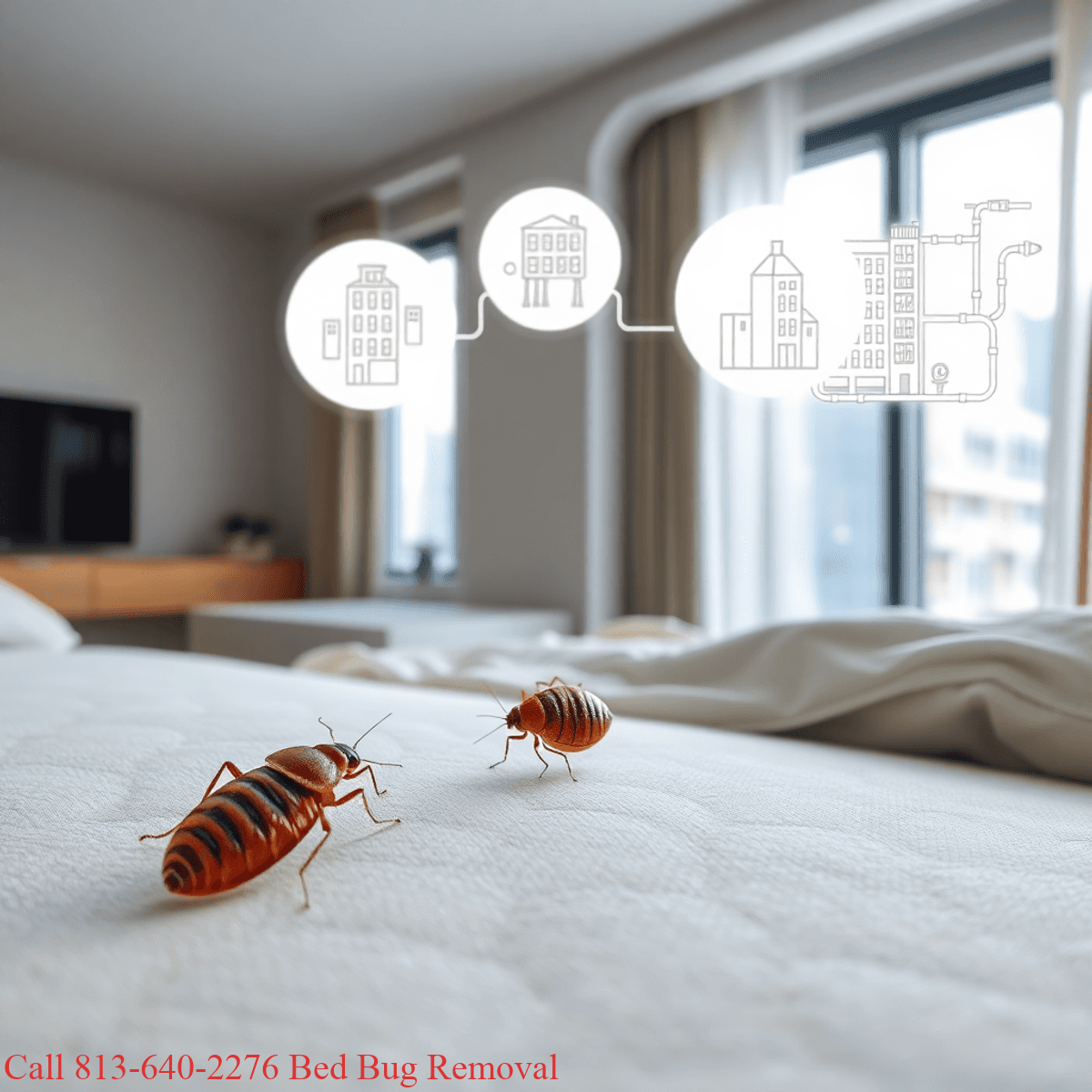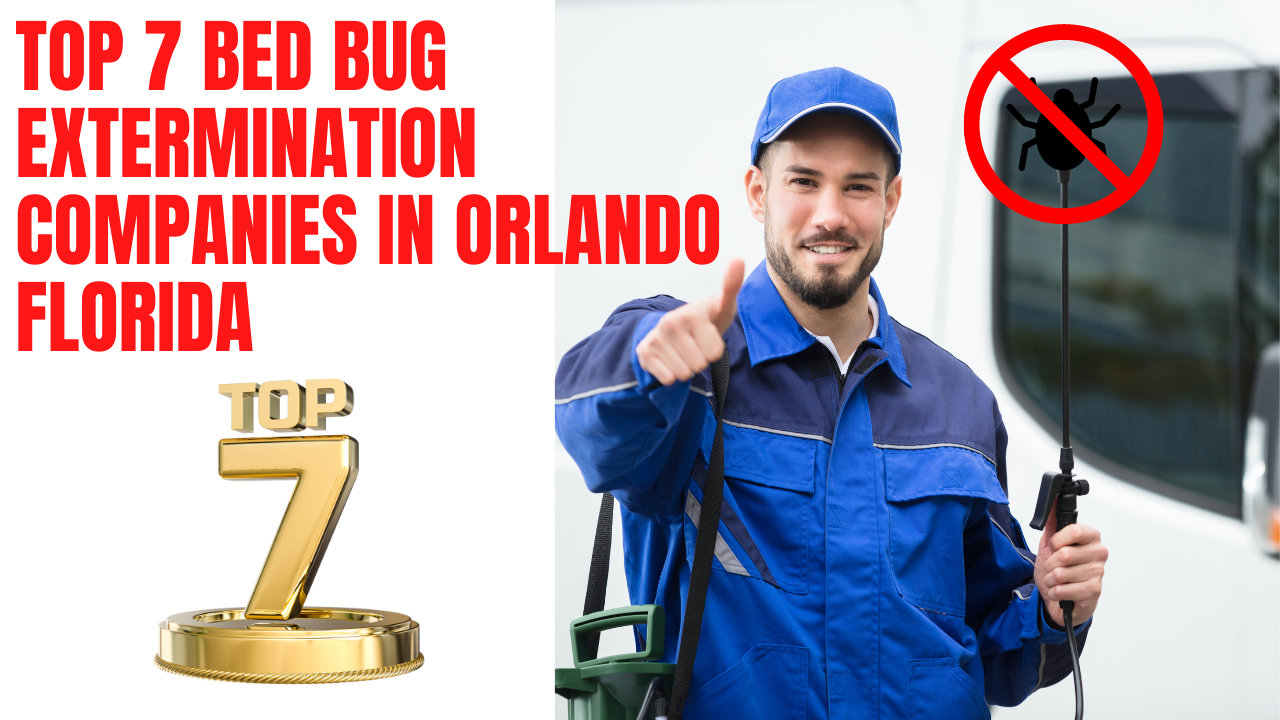Bed bug infestations have become a pressing concern for Tampa apartment residents and property managers. These resilient pests create significant challenges in multi-family housing environments, requiring specialized treatment approaches for effective elimination.
K&A Pest Control, with over 16 years of experience serving the Tampa area, reports an increasing number of bed bug cases across residential complexes. Tampa ranks as the 31st most bed bug-infested city in the United States, highlighting the scale of this issue in our local community.
This comprehensive guide will explore:
- Research-backed treatment methods specific to apartment settings
- The science behind bed bug behavior in multi-unit buildings
- Step-by-step preparation processes for successful treatment
- Professional extermination options in Tampa
- Prevention strategies for property managers and residents
Understanding these key aspects helps residents and property managers make informed decisions about bed bug control. The right knowledge prevents panic responses that can worsen infestations and ensures effective, long-lasting solutions for Tampa’s apartment communities.
Understanding Bed Bugs and Their Behavior in Apartments
Bed bugs have distinct behavior patterns in multi-unit buildings, making them particularly difficult to control in apartment settings. Research from Purdue University reveals a critical insight: CO2 accounts for 95% of what attracts bed bugs to humans, while heat attraction represents only 2.5% of their seeking behavior.
How Bed Bugs Move in Apartments
These resilient pests navigate through apartment complexes using:
- Wall cavities
- Electrical conduits
- Plumbing systems
- Floor and ceiling voids
The Impact of Heat on Bed Bugs
Heat-based treatments can trigger survival instincts in bed bugs, causing them to scatter deeper into building structures. When temperatures rise, these pests instinctively flee into cracks and crevices, often migrating to adjacent units through shared walls and floors. This dispersal behavior creates new infestations in previously unaffected apartments.
The Movement Patterns of Bed Bugs
The natural movement patterns of bed bugs in multi-family dwellings follow specific pathways:
- Primary Movement: Following CO2 trails from human breath
- Secondary Movement: Responding to environmental pressures like heat
- Structural Migration: Using building features as highways between units
Understanding these behavioral characteristics helps explain why some traditional treatment methods can worsen infestations in apartment settings. Bed bugs’ strong attraction to CO2 makes them excellent at finding new hosts, even after being displaced from their original location.
Common Bed Bug Treatment Methods and Their Effectiveness
Different treatment approaches yield varying results in the battle against bed bugs. Let’s examine the effectiveness of popular treatment methods:
1. Heat Treatment Limitations
- Ambient heat methods drive bed bugs deeper into wall structures
- Bed bugs scatter through walls, floors, and ceilings during treatment
- Heat only accounts for 2.5% of bed bug attraction factors
- Risk of spreading infestations to adjacent apartment units
2. Chemical Treatment Drawbacks
- Temporary solution with short-term effectiveness
- Bed bugs retreat into hard-to-reach areas
- Bugs resurface after 2-4 weeks more resilient than before
- Potential health risks from chemical exposure
- Creates resistant bed bug populations
3. Steam Treatment Benefits
- Deep penetration into cracks and crevices
- Eliminates bed bugs in their hiding spots
- Non-toxic and environmentally safe option
- Particularly effective in multi-family homes
- Immediate results without chemical residue
4. Treatment Cost Considerations
- Steam treatments require professional equipment
- Chemical treatments need multiple applications
- Heat treatments demand specialized heating systems
- Professional service costs vary by infestation severity
- Long-term effectiveness impacts overall treatment value
Professional pest control services typically combine multiple treatment methods for optimal results. The most effective approach integrates steam treatments with mechanical measures to ensure thorough bed bug elimination.
Combining Mechanical and Non-Toxic Treatments for Optimal Results
Research shows that successful bed bug elimination requires a multi-faceted approach combining mechanical barriers and monitoring systems. High-quality mattress and box spring encasements create an impenetrable barrier, preventing bed bugs from establishing new hiding spots within these common infestation areas.
Key Mechanical Control Methods:
- Professional-grade mattress encasements seal existing bed bugs inside
- Box spring covers eliminate potential harborage points
- Protective barriers block bed bug access to sleeping areas
The science behind effective bed bug monitoring relies on their natural attraction to CO2. Studies indicate that carbon dioxide accounts for 95% of what attracts bed bugs to humans, making CO2-based monitoring devices highly effective.
Strategic Device Placement:
- Position monitors under bed legs to intercept bugs
- Utilize CO2 emission to lure bed bugs into traps
- Create a detection zone around sleeping areas
These mechanical methods work alongside non-toxic treatments to:
- Prevent new infestations
- Monitor treatment effectiveness
- Provide early warning of potential problems
- Create long-term protection
Professional monitoring devices placed correctly under bed legs harness the natural CO2 we exhale during sleep. This strategic placement creates an effective interception point, capturing bed bugs before they can reach sleeping residents.
Preparing Tampa Apartments for Bed Bug Treatment
Proper preparation maximizes treatment effectiveness in Tampa apartments. Here’s a detailed preparation guide to ensure successful bed bug elimination:
Essential Pre-Treatment Steps:
1. Declutter Living Spaces
- Remove unnecessary items from floors and surfaces
- Sort through belongings carefully to avoid spreading bugs
- Place items in sealed plastic bags during treatment
2. Isolate Infested Items
- Place infested clothing in sealed bags
- Wash all fabrics in hot water (130°F minimum)
- Dry items on high heat for at least 30 minutes
- Keep treated items separate from untreated ones
3.** Prepare Furniture and Rooms**
- Move furniture away from walls
- Remove switch plates and outlet covers
- Empty drawers and closets
- Stand mattresses and box springs on edge
Prevention Education for Residents:
- Install bed bug interceptors under furniture legs
- Regular inspection of common areas
- Report signs of bed bugs immediately
- Avoid bringing second-hand furniture without inspection
- Keep belongings away from shared walls in multi-unit buildings
Documentation Requirements:
- Take photos of infested areas
- Note locations of bed bug activity
- Keep records of all preparation steps
- Document any damaged items
These preparation steps create optimal conditions for treatment success while protecting residents’ belongings and preventing future infestations in Tampa apartment communities. After the treatment, it’s crucial to follow specific cleaning procedures to ensure all bed bugs and their eggs are effectively removed from the living spaces.
Professional Bed Bug Exterminator Services in Tampa: What to Expect
K&A Pest Control stands out as a trusted name in Tampa’s pest control industry, bringing over 16 years of specialized experience in bed bug elimination. Their comprehensive approach combines research-backed methods with proven results.
Key Service Features:
- 24/7 customer support
- 12-month treatment guarantee
- Highest Bed Bug-Free accreditation
- Non-toxic treatment options
- Multi-step elimination process
Treatment Process:
- Detailed property inspection focusing on common hiding spots:
- Mattresses
- Furniture
- Electronics
- Wall crevices
- Implementation of customized treatment plan:
- Professional dry steam application
- High-quality mattress encasements
- Strategic CO2 monitoring device placement
- Specialized item treatments
- Post-treatment follow-up visit after three weeks
K&A Pest Control serves multiple areas across Tampa Bay, offering pesticide-free solutions tailored to Florida’s unique climate conditions. Their service areas include St. Petersburg, Lakeland, and surrounding regions.
Professional Guarantee:
- Long-term protection against reinfestation
- Non-biased monitoring systems
- Scheduled re-inspections
- Comprehensive documentation
- Expert guidance throughout treatment process
For immediate assistance with bed bug infestations in Tampa, contact licensed professionals at 941-735-4250.
Name: K&A Pest Control
Address: 301 W. Platt St. #A116
Tampa, FL 33606 United States ![]()
Phone: 813-640-2276


